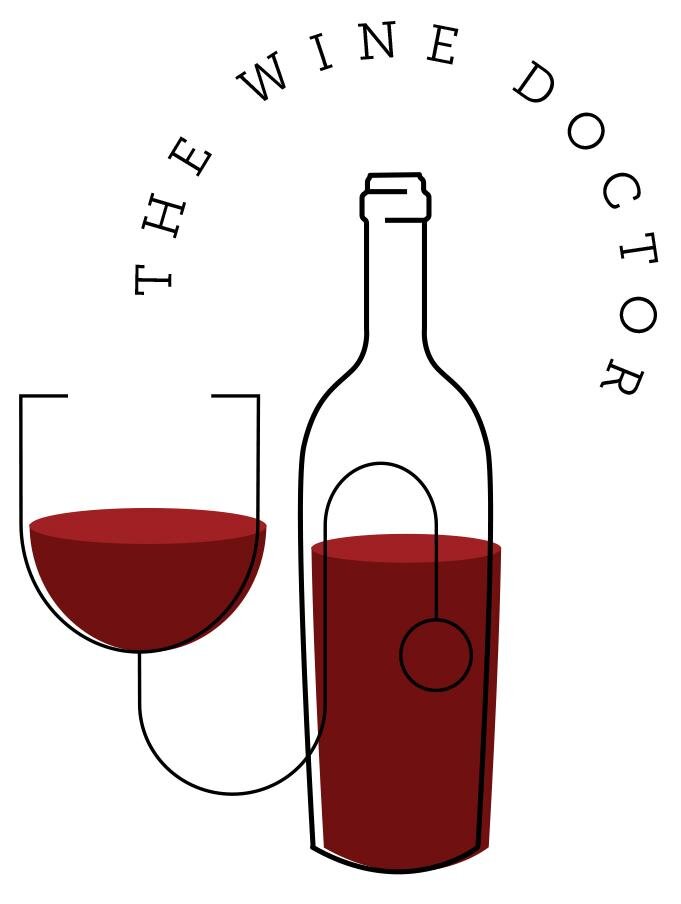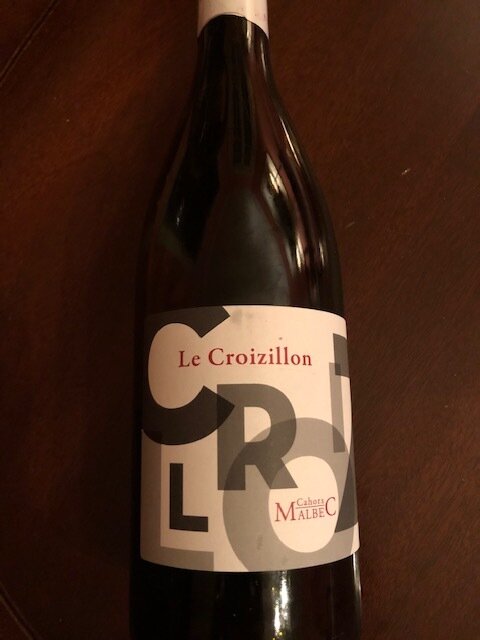Don't Cry For Me Argentina
Not too difficult to guess where we are headed in this post! While Argentina produces very good red wine from varietals such as Cabernet Sauvignon, Bonarda and Syrah, there is one that stands head and shoulders above all others…Malbec! In fact, it is Malbec that almost single-handedly put Argentina on the international wine map. Today, Argentina ranks 5th in worldwide wine production, behind only Italy, France, Spain and the US.
To provide some context for where Malbec came from, and give you another example of how the same grape can vary depending on where it is grown, we will profile a Malbec from France, where it got its start. However, because Malbec from Argentina is widely available, good quality and affordable, our focus will on the Southern Hemisphere.
Ok, so what’s the deal with Malbec? Where did it come from and why do we like it so much? Before the mid 1800s, Malbec was principally found in France. More specifically, Malbec could be found in Bordeaux, where it played a supporting role to Cabernet and Merlot in those classic Bordeaux blends. Today, Malbec is more prominent in the very southwest part of France, in a region known as Cahors, and also in the Loire Valley. In these regions it is mostly a single varietal bottling, going by the name of Cot (pronounced “coat”).
Malbec tends to be a thick-skinned, concentrated grape producing wines that are full-bodied, with bold, dark fruit flavors as well as notes of cocoa. In Cahors, Malbecs can be more tannic and savory, while in Argentina they are “juicier”, with softer tannins and good acidity (particularly if they are grown at higher altitudes- see below).
So let’s get started. Argentina. About 75% of Argentina’s wine production comes from the region of Mendoza, far to the west of Buenos Aires, at the foot of the spectacular Andes Mountains. I feel a map coming, how about you?
Look at that enlarged area on the left side of the map. This area around Mendoza benefits from a terroir (feel free to refresh your understanding of this key term in Wine 101) conducive to producing fine Malbec. The climate is relatively stable, with hot, dry days, followed by much colder nights thanks to the winds coming in from the west off the Andes. Look at the altitudes highlighted on the map: 2,200 to over 3,500 feet above sea level. This cooling results in an extended growing season, slowing the ripening and producing rich flavors and higher acidity than you would find at lower elevations.
Our wine comes from the Uco Valley, home to some of the highest altitude vineyards in Mendoza. On the map, the vineyard is closest to the #19 - Los Arboles. This Malbec is produced by an estate known as Tapiz, which translates loosely to “tapestry”. I got my bottle locally at Heinens for about $17. You should be able to find it for $17-18.
Tapiz 2017 Estate Malbec, “Alta Collection”
Tapiz is a family-owned operation, founded in 2003 by former physician Patricia Ortiz. From the beginning she made a commitment to owning the land and growing the grapes (see Estate in Wine 101). She has since acquired prime vineyards in three very different regions of Argentina: Mendoza, Salta and Patagonia. In addition to Tapiz, her other Argentine labels are Zolo and Wapisa. It is worth noting in 2012 she brought on Jean Claude Berrouet as consulting winemaker. Berrouet had retired after 44 years as winemaker at Petrus, one of the most prominent and sought after Bordeaux producers year in and year out.
The grapes for our wine grow at over 4,000 feet elevation. They are picked by hand. The grapes ferment in stainless for about 15 days and then age in oak for about 9 months: 85% French and 15% American.
Tasting:
Before you even bring your nose to the glass, you can see that beautiful Malbec color as you swirl: deep ruby with some violet hues on the edge. On the nose, you certainly get blue and black fruits, but the smell that was most noticeable for me was plum, actually a rich, stewed plum aroma. The palate follows the nose - meaning what you smelled was a good indication of what you were about to taste. This wine is fresh, rich and juicy. Tannins are there but not really dominant. The finish is clean although not too long. The high altitude produces good acidity, which keeps the wine from becoming too jammy, which can happen with more everyday, lower altitude Malbecs in Argentina.
The Bottom Line:
This is classic Malbec from Argentina. Versatile and friendly. It keeps you coming back. And why not? At this price point, it is a great value. From a food perspective, because Argentinian Malbec isn’t as tannic as Cabernet Sauvignon, it pairs well with leaner red meats. Game such as venison or buffalo are a great match with Malbec’s fruit qualities. It is also good with pork or dark meat turkey. Other pairings you should look for are mushrooms and blue cheese. I think we have the makings of a great burger & wine combo here!
Other Suggestions
In the spirit of full disclosure, I tried another Argentinian Malbec before the Tapiz: the Mendoza Vineyards 2013 Gran Reserva Malbec. $20. Dark fruit and spice on the nose, with some bell pepper. I was surprised by the sharpness and tannins after tasting it. The wine seemed “tight”. It did have that high altitude acidity though. Frankly, I expected something smoother after 6 years in the bottle, so I chose not to profile it for the blog. To be fair, I decanted it and after a while with more exposure to air, it got better, but not enough to get the Doctor’s spotlight.
There are many Malbecs to enjoy from Argentina, and I couldn’t begin to list them here. However, there are a few names that deserve special mention, particularly if you are willing to spend a little more than our everyday self-imposed guideline. Each of these producers have multiple labels, but you can’t go wrong with anything they make:
Bodega Catena Zapata - Making wine in Mendoza since 1902…they know what they are doing!! Responsible for resurrecting Malbec and putting Argentine wines on the world map. www.catenazapata.com
Achaval-Ferrer
Zuccardi - winner of World’s Best Winery in 2019 from a group of 500 wine experts, sommeliers and travel correspondents from a field of 1,500 entrants! Check them out at www.zuccardiwines.com (click English in case your Spanish is rusty!) - stunning winery and great family story.
Piattelli
France
While the focus of this post is Argentina, we need to appreciate where this grape got its start, and where it still thrives today. Let’s have a quick look at a Malbec from Cahors in the southwest of France.
As we noted earlier, Cahors is now the steward of Malbec in France. It is an interesting region, with the River Lot snaking through it.
Yep…map time.
Look how close Cahors is to Bordeaux. Like Bordeaux, it is influenced by the Atlantic Ocean. It also has hot summers and can even get a Mediterranean impact Bordeaux can not. In addition, the river helps produce a variety of micro-climates. More specifically, while there are 3 “terraces” in the region, only the higher two are suited for growing grapes. The highest is a limestone plateau known as “Les Causses”.
I was only able to find one Malbec from Cahors in my local shop, Heinens, but I am very pleased with the results. The wine is called “Le Croizillon” and is made by a wonderful family-owned winery called Chateau Les Croisille. In the map above, they are located a little north and east of the the letter “t” in “River Lot”, around that big loop in the river. It is very affordable at around $14.
Le Croizillon Malbec 2017
This is a great story. In 1979, Bernard and Cécile Croisille moved to Fages, located in the countryside surrounding the tiny town of Luzech in Cahors. They became itinerant farmers on a plot of land that had been untouched for years. It wasn’t until 1984 that they had grapes which could be sold to the local cooperative. In 1996 they purchased an estate that had fallen into ruin and rebuilt it. Fast forward to the 2000s and the Croisille’s purchased their leased land and then some, bringing children and friends into the growing and prospering business. They now have roughly 75 acres in two locations in Cahors. They are very focused on organic and sustainable farming. Here is a look at some of their land:
The Croisilles produce mostly Malbec, but some white wine as well. Our wine comes from those limestone plateaus from both the Luzech and Fages properties. The Croisilles use a technique known as Carbonic Fermentation for about 1/3 of the Le Croizillon production, not typically done with Malbec. Carbonic Maceration is a way to ferment whole clusters of grapes in a carbon dioxide-rich environment. It can reduce bitter tannins and preserve delicate floral aromas. It is most commonly used to produce Beaujolais Nouveau. Le Croizillon was aged for just 6 months in concrete tanks. Alcohol is low at 12.5%.
Tasting:
This Malbec has a deep ruby hue, although not quite the dense purple color we saw with the Tapiz. On the nose, I got a combination of berries, herbs and some baking spices. On the palate, the initial hit is a little tart, like cranberries. However, it finishes smoother. This is a fresh, fruit-forward Malbec from France. It is not as savory as other French Malbecs can be, which is a nice surprise. The tannins are not pronounced; they are in balance. Acidity is decent even though elevations don’t compare with Argentina.
The Bottom Line:
Le Croizillon is a lighter, fresher style of Cahors Malbec than I was expecting, but it is a pleasant surprise. This is a versatile, affordable and food-friendly wine that you can enjoy in many ways.
Well, that about does it. If you are new to Malbec, please give it a try. If you already like it, I hope you experiment further in Argentina, and look for a Malbec from Cahors France! And please…let me know what you think about WineMD, what you’d like to learn more about, what you are drinking, etc. The Doctor is in!
Until next time….Cheers!





